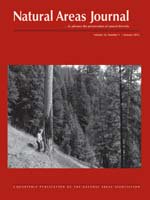The Palouse Prairie of eastern Washington State and adjacent northern Idaho is an endangered ecosystem. Like other arable North American grasslands, the prairie was mostly converted to agriculture in the late 1800s, and native habitat is today highly fragmented within a matrix of production agriculture. Government and conservation groups are beginning conservation action in the region, but lack information regarding the number and nature of the prairie remnants. We used high-resolution aerial photography to identify potential prairie remnants in the southern half of the Palouse and describe their physical characteristics. We found that although there are many potential remnants, they tend to be small (most less than 2 ha) and have high perimeter-area ratios. Potential remnants are disproportionately found on rocky and shallow soils in the region, with only a few located on the deepest, most agriculturally valuable soil types. The remnants occur predominantly in a few large clusters near rivers and rocky buttes, and over half are within 150 m of the next nearest remnant. Almost all remnants are privately owned. The high number and clustered distribution of the remnants suggest a conservation strategy for the Palouse may be based on developing a network of small reserves. This may be best implemented at the county level through outreach efforts and partnerships with private landowners.
How to translate text using browser tools
1 January 2012
Characteristics and Distribution of Palouse Prairie Remnants: Implications for Conservation Planning
Chris Looney,
Sanford D. Eigenbrode
ACCESS THE FULL ARTICLE

Natural Areas Journal
Vol. 32 • No. 1
January 2012
Vol. 32 • No. 1
January 2012
conservation
fragmentation
mapping
Palouse
prairie




